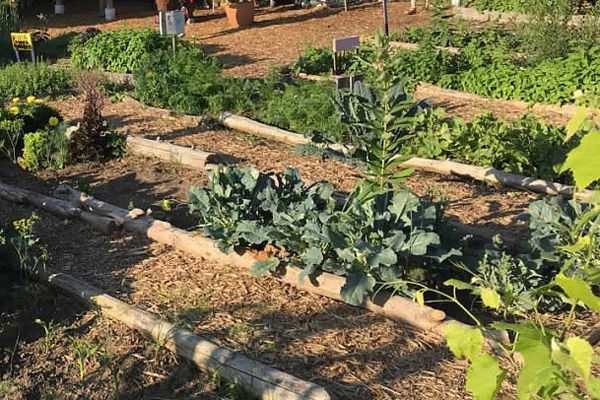8 Easy Facts About City Blooming Explained
8 Easy Facts About City Blooming Explained
Blog Article
The City Blooming PDFs
Table of ContentsFascination About City BloomingA Biased View of City BloomingSome Of City BloomingExamine This Report about City BloomingExcitement About City Blooming
Fascinated in expanding food for sale in the City of Chicago? Considering starting a community yard? Adjustments to the Chicago Zoning Statute enable agricultural usages like neighborhood yards and city farms in many components of the city. Below is a listing of frequently asked inquiries pertaining to the guidelines and regulations that farmers need to consider when intending a city farming job.
The zoning amendment does not customize any various other codes dealing with composting, building authorizations, purchasing or renting City owned building, service licenses or environmental contamination. There are existing codes that manage these problems and they continue to be completely effect and might be applicable to your project. Community gardens are normally had or taken care of by public entities, public organizations or community-based companies and kept by volunteers.
Urban ranches expand food that is intended to be offered, either on a not-for-profit or for-profit basis. Because of their business objective, urban farms call for a business license. Yes. A neighborhood yard is permitted to offer surplus create that was expanded on website if the sales are accessory or subordinate to the garden's main function defined over.
Everything about City Blooming
The quantity of compost material can not exceed 25 cubic backyards at any kind of provided time according to the requirements in 7-28-715 of the City's Municipal Code. Since the soil at most new yard websites needs modifying, garden compost, dirt, timber chips, or various other materials can be gotten to build or enhance the expanding area.

If a building authorization is called for then the hoophouse will be taken into consideration an accessory building. You can discover even more about the structure license requirements by speaking to the Division of Buildings. The 25,000-square-foot dimension restriction is intended to protect against a single neighborhood yard from controling a provided block or detracting from the block's existing household or industrial character.
The restriction does not use to yards located in Public Open Space (POS) districts. Can there be more than one area garden that is 25,000 square feet on a solitary block? Yes. The size restriction puts on private gardens, not to private blocks. No. Fence is not required, nonetheless, gardens that have big vehicle parking locations may be needed to mount fencing or various other landscaping functions.
Not known Facts About City Blooming
B1 & B2 districts need that all commercial usage tasks be carried out indoors. Is secure fencing required for metropolitan ranches? Fences may be needed, along with landscape design and screening, for certain auto parking locations and outdoor job or storage space locations depending on place and the particular task taking place.
Yes. Urban farms need building licenses and zoning authorizations before building. Other types of city review may be needed depending upon details frameworks, activities, dimension, landscaping, licensing, public heath and stormwater monitoring problems. Many of these needs are determined in the project design or allowing process, nevertheless, the candidate might be responsible to individually determine particular licenses or permits that may be needed.
The Department of Company Matters and Customer Protection can assist establish the particular kind of organization license that's needed. Off road auto parking is required for the majority of industrial projects in Chicago. The needed number of vehicle parking areas is based on the number of employees functioning on site and not the square video footage of the growing area.
The Best Strategy To Use For City Blooming

Yes. A metropolitan ranch can market compost product produced on site, nevertheless, the operation should conform with the policies in 7-28-715 of the Chicago Municipal Code. Yes. Aquaponic systems are permitted indoors on metropolitan ranches in several zoning districts. Nevertheless, a zoning review and structure permit useful reference is needed in order to set up structures or systems and a business license is called for as described over.
As much as 5 hives or swarms of honey may be maintained as an accessory use. Nevertheless, beekeepers must register with the Illinois Department of Agriculture. For additional information about the proposed zoning change you may call the Division of Housing and Economic Advancement, Bureau of Preparation and Zoning at 312.744.8563.
Farming in cities and city areas A city ranch in Chicago. Urban farming refers to numerous techniques of growing. https://www.tumblr.com/cityblooming1/754396373643853824/welcome-to-our-website-city-blooming-is-all-about?source=share, processing, and dispersing food in city areas. The term also uses to the area tasks of animal husbandry, aquaculture, beekeeping, and gardening in a metropolitan context. Urban agriculture is distinguished from peri-urban farming, which happens in country areas beside residential areas.
City Blooming Can Be Fun For Everyone
It can involve an activity of organic farmers, "foodies" and "locavores", that seek to form socials media started on a shared principles of nature and community holism. These networks can establish using formal institutional support, ending up being incorporated into regional town planning as a "transition community" activity for sustainable metropolitan growth.
The more straight access to fresh vegetable, fruit, and meat items that might be realised through metropolitan agriculture can boost food safety and security and food security while lowering food miles, bring about reduced greenhouse gas emissions, therefore adding to climate modification mitigation. A few of the very first proof of metropolitan agriculture originates from Mesopotamia.
Report this page